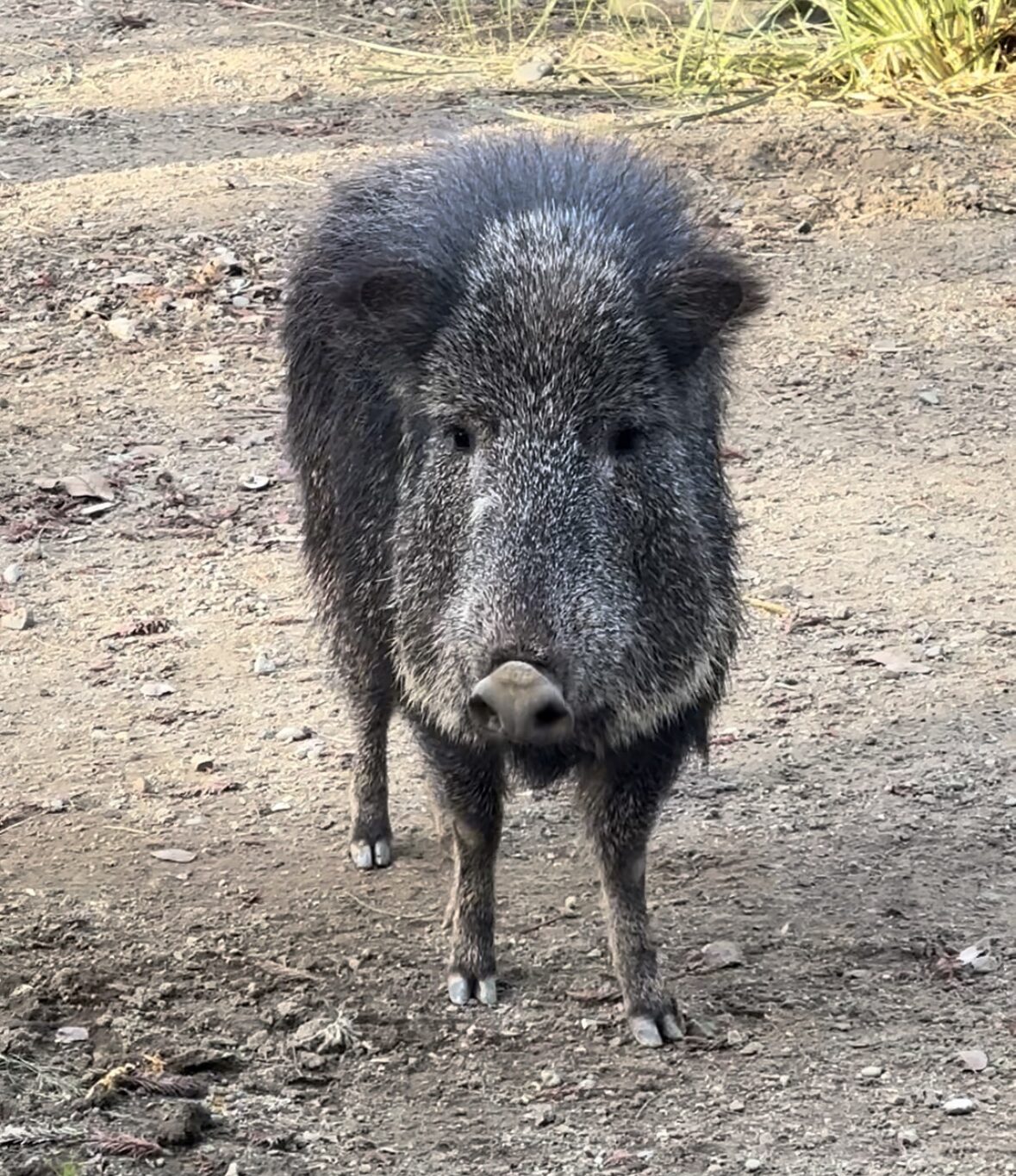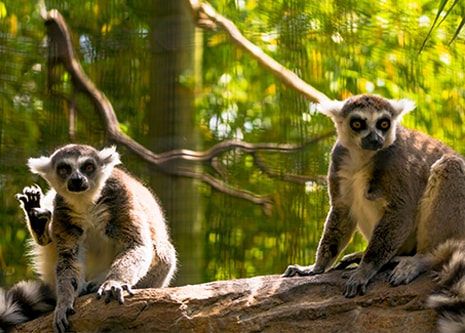
- VisitSupport Happy HollowDONATE TODAYExploreSupport Happy HollowDONATE TODAYLearnSupport Happy HollowDONATE TODAYSupport
-
Today's Hours: 10:00 am to 5:00 pm
Zoo in the HollowChacoan peccary

Scientific name: Catagonus wagneri
Family: Tayassuidae
Order: Artiodactyla
Class: Mammalia
Range: The Gran Chaco in Paraguay, Bolivia, and Argentina
Habitat: Savannah plains, marshes, thorn forests
Lifespan: 9 years in the wild, 18 years in captivityWhat do they look like?
Weighing roughly 66-95 lbs and reaching lengths of 38-46 inches, the chacoan peccary is the largest of the three peccary species. They have bristle like fur that is a brown or almost grey. Other difference between the chacoan and other peccaries are their longer ears, snout, and tail as well as white hairs around its mouth and a third hind toe as opposed to the two found in other peccary species.How do they behave?
Social animals, chacoan peccaries live in groups called “squadrons” that can range from 2 to 10 individuals. Unlike many other animals living in the chacoan region, these animals are diurnal (active during the day), often walking around and marking their territory through the use of scent glands located on their back and will often communicate through a combination of grunts and teeth chattering. Although considered relatively peaceful when compared to other peccary species, they have been known to display the occasional aggressive behavior such as charging and biting.What do they eat?
Considered an omnivore, the chacoan peccary primarily feeds on cacti, as well as acacia pods and cacti flowers. Using their tough snouts, these animals will roll cacti on the ground in order to remove their spines before eating it as well using their teeth to pull off and spit out the spines. The peccaries have a very specialized digestive tracts, with kidneys able to break down the acids of the cacti as well as a two chambered stomach that is able to break it down as well as any other tough food. Here at the zoo, they are fed herbivore pellets, vegetables, lettuce, and grass hay.How are they born?
The breeding season of chacoan peccaries vary greatly, often depending on the amount of rainfall and availability of food. Births can happen at any time of the year but are most common between the months of September and December. Females will have a gestation period of approximately 5 months, after which they will often temporarily leave the group and can give birth to up to 4 offspring, though 2-3 are most common. Newborn chacoan peccaries are precocial, able to run after only a few hours of being born and will reach sexual maturity at about 2 years old.Conservation
There are currently three species of peccary, and their conservation status ranges from Least Concern (collared peccary) to Endangered (chacoan peccary) according to the International Union for Conservation of Nature (IUCN). All species of peccary are at risk of decline due to increased rates of habitat destruction and overhunting, so it is important that all populations are continually monitored to ensure their success. All three species are listed under the Convention on International Trade in Endangered Species of Wild Fauna and Flora (CITES), which places regulations on the trade and transport of peccary products. If you pledge to stay away from any kind of animal product souvenirs when traveling abroad, you can help the peccaries and save time on your trip back home!
Zoo on the Hill
Located across from the Keep-Around Carousel is the Zoo on the Hill. Learn about wildlife up close during daily meet-and-greets, leap like a lemur on the playground, brush and feed the goats,, or take a peek inside Doc’s Critter Care building and the Ranch House. Double-H Ranch features a combination of animal exhibits, including giant anteaters and red ruffed lemurs, as well chickens and domesticated animals that are docile enough to touch.
See Animals
Education Ambassadors
From camps and classes to scout badges and sleepovers, Happy Hollow education programs have something for everyone! The zoo education program offers a broad range of hands-on, engaging programs and public presentations featuring education ambassador animals. These encounters are designed to connect you to wildlife and the conservation of their habitats around the world.
See AnimalsVisit Us Today
Plan an unforgettable experience at San Jose’s family-friendly park and zoo.
Learn More